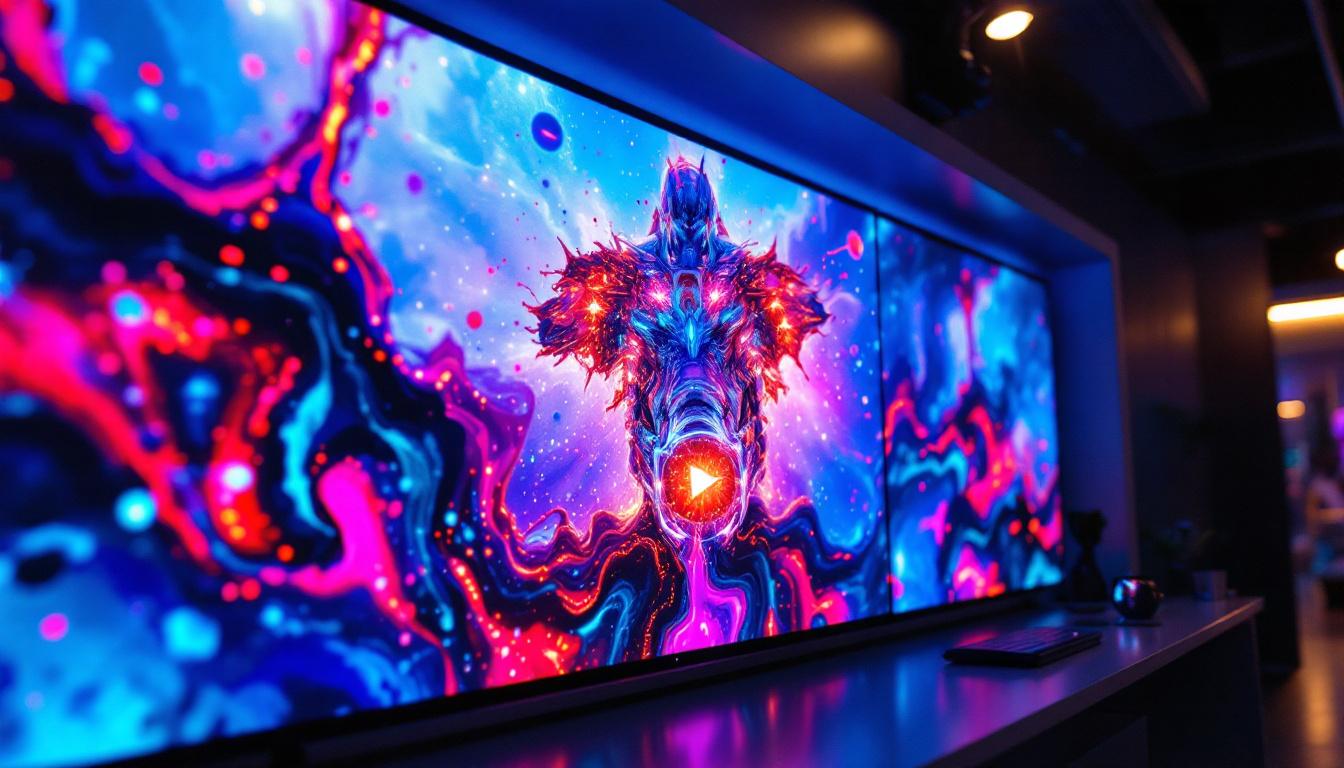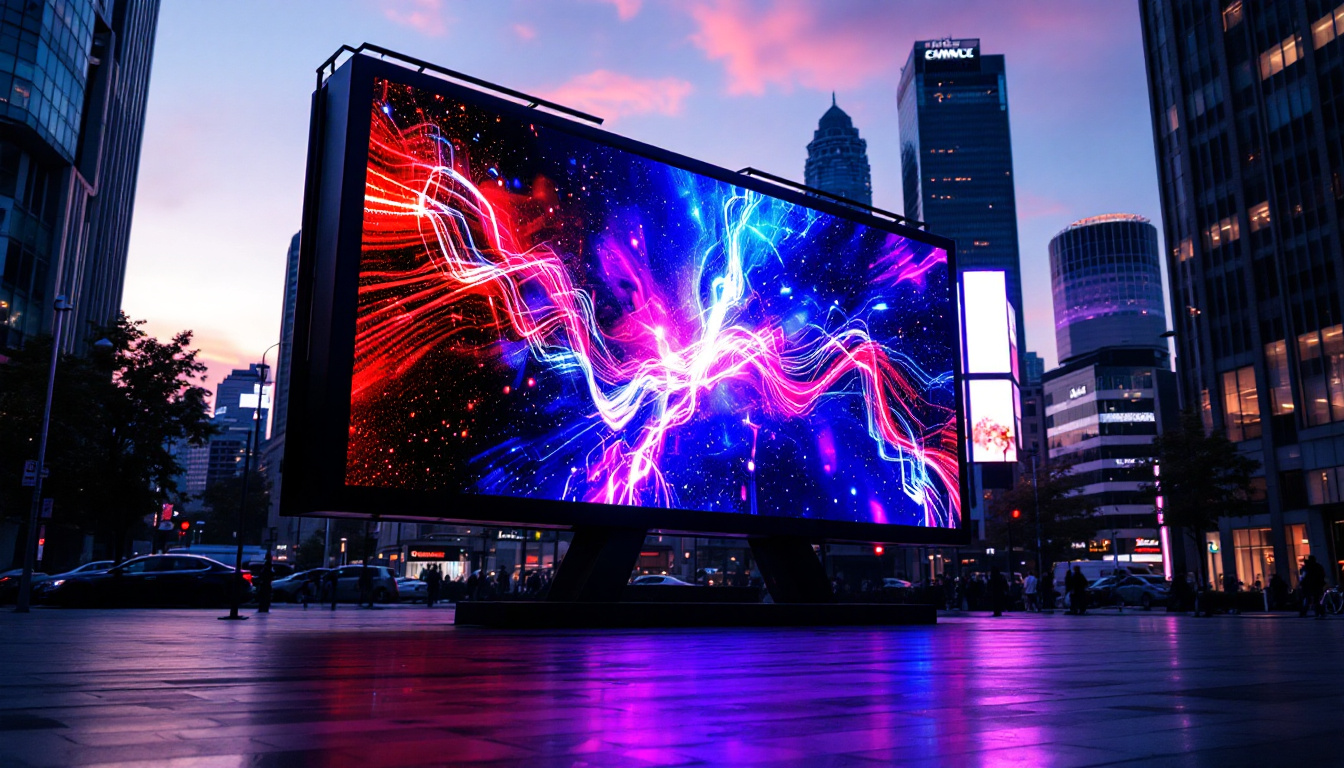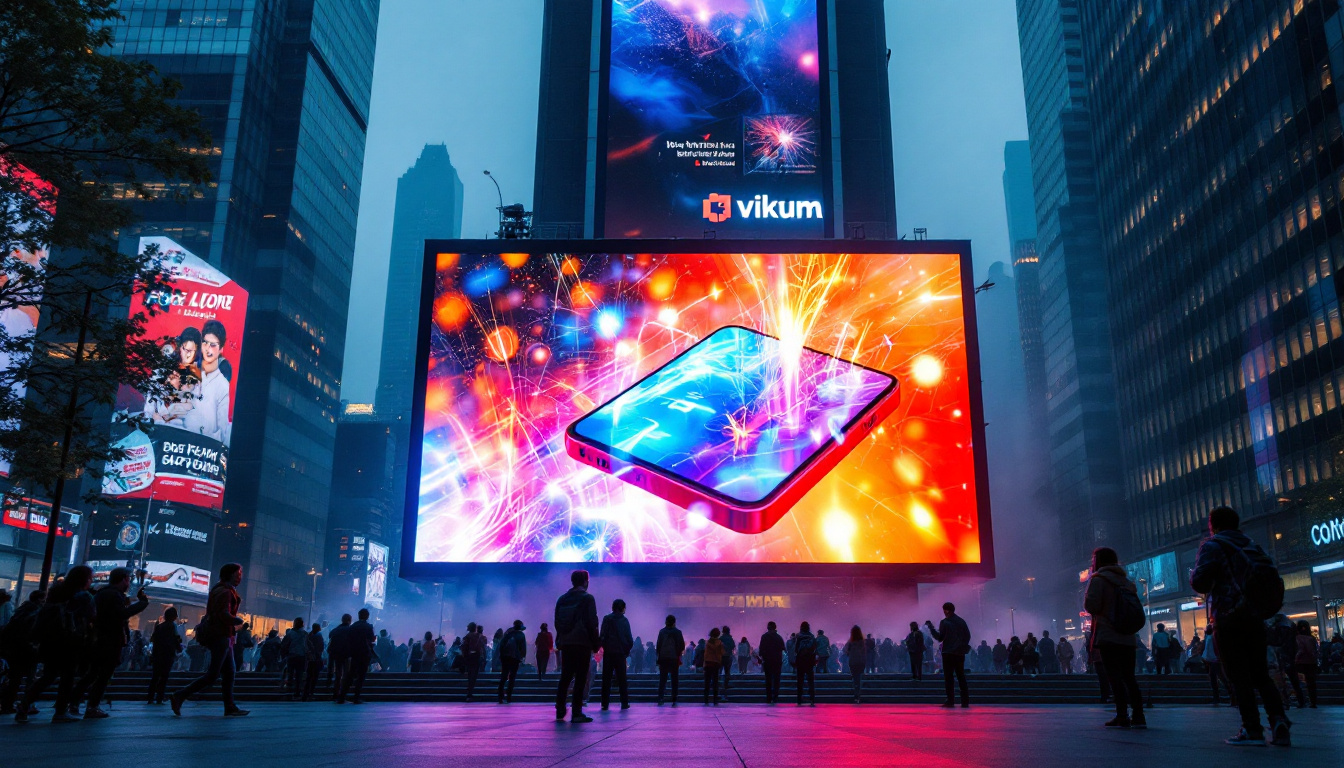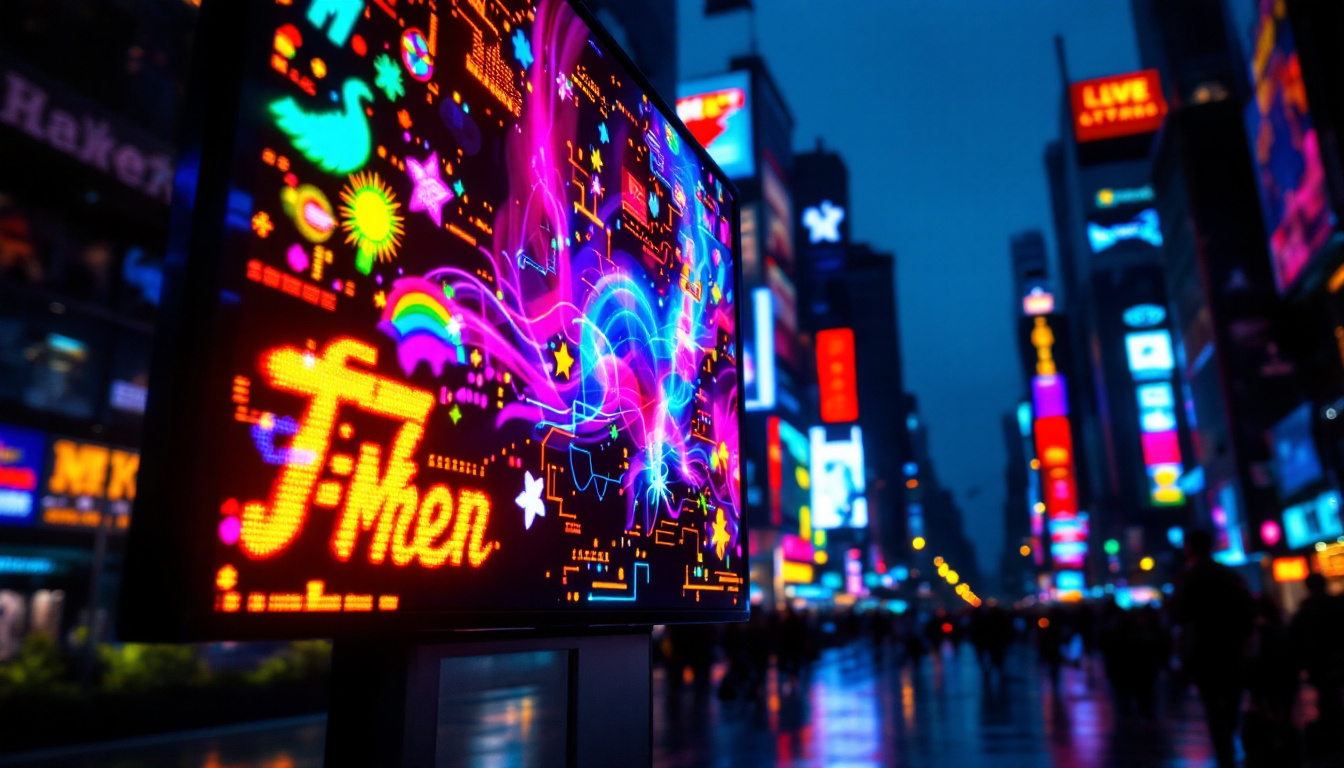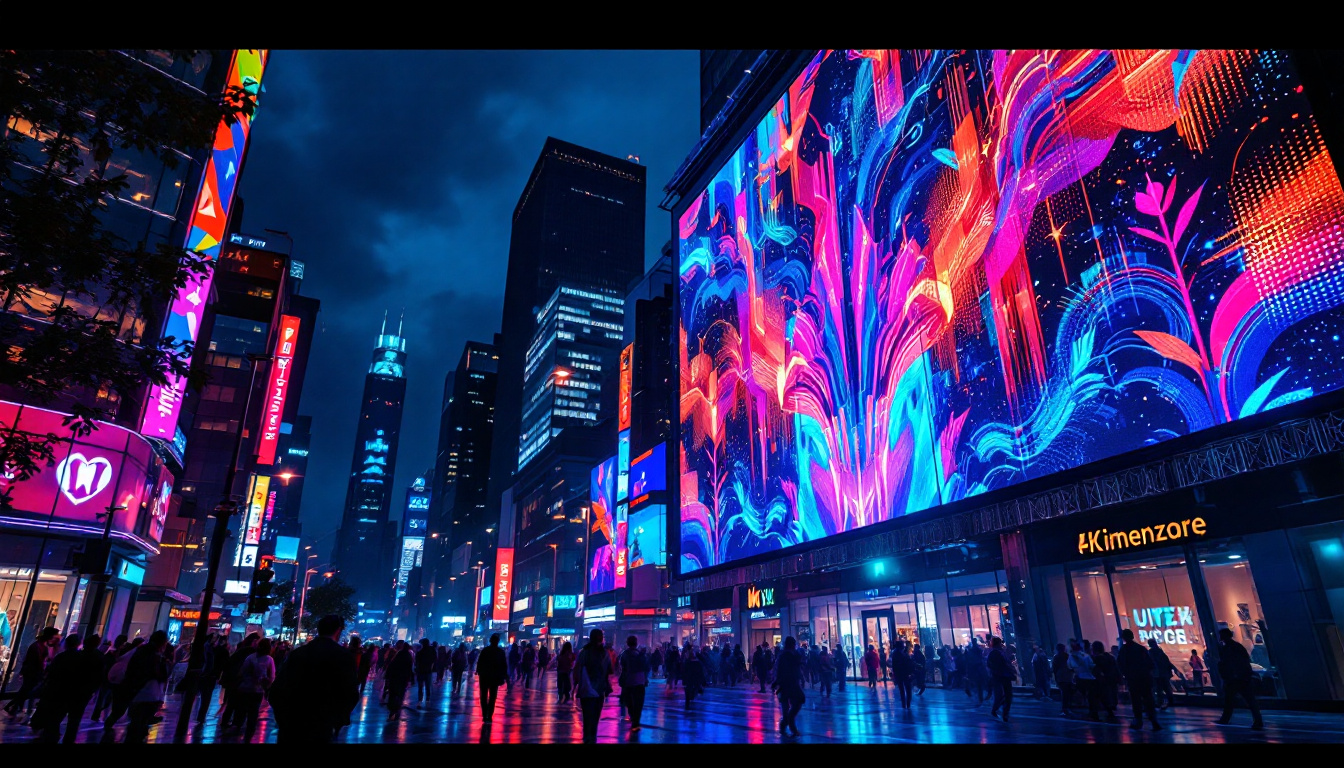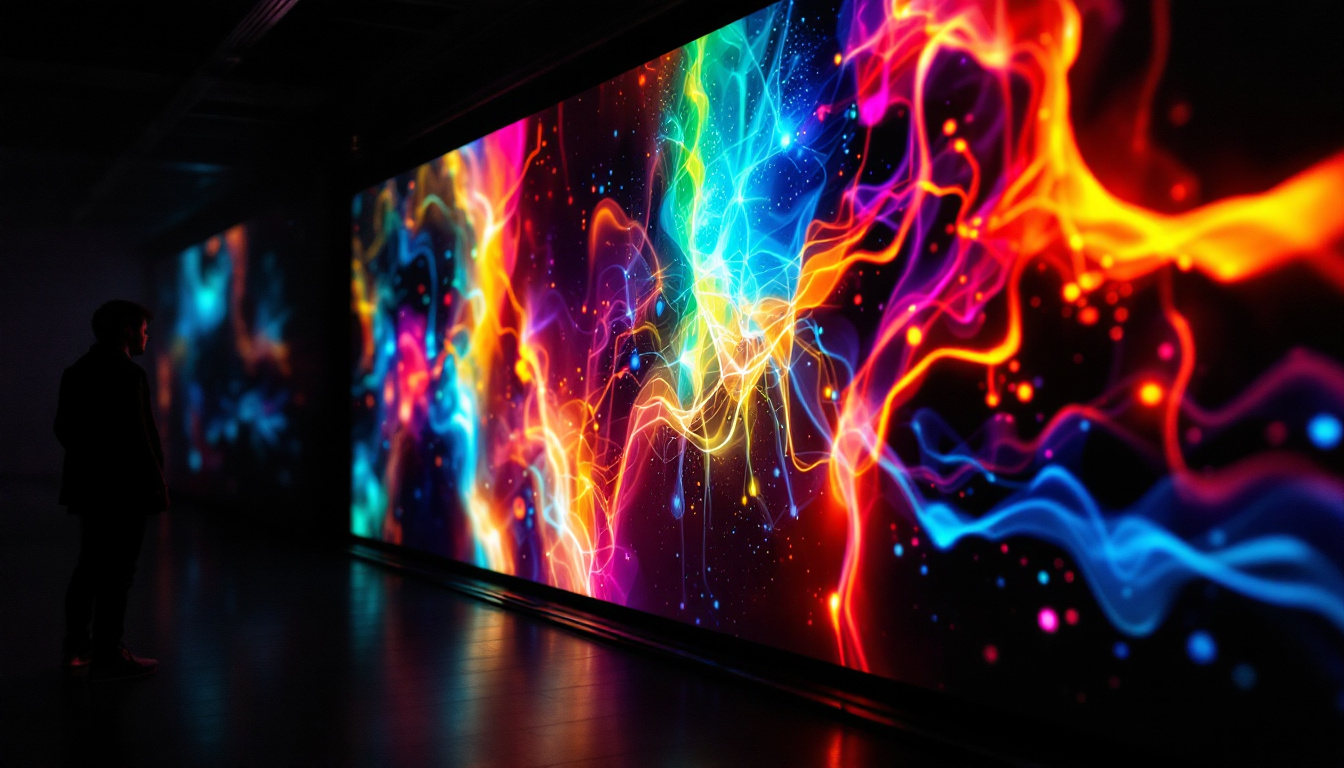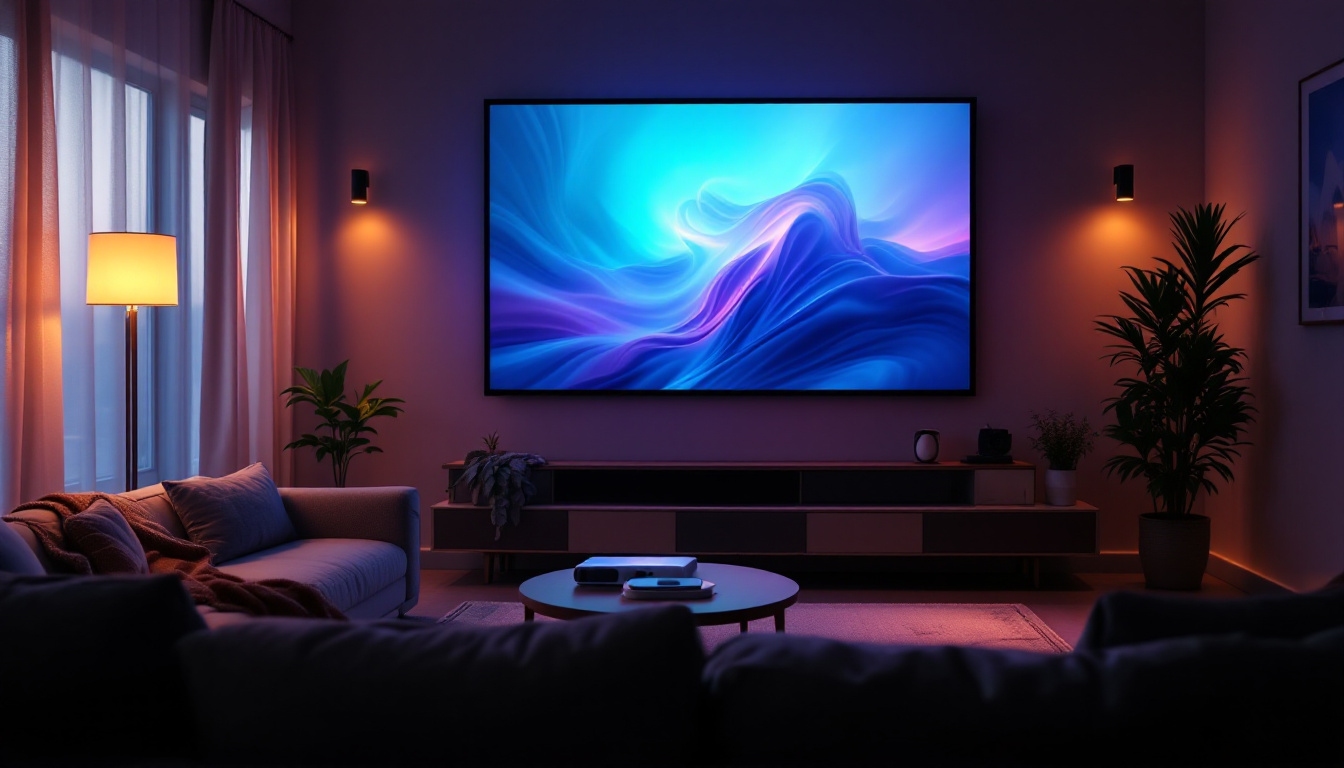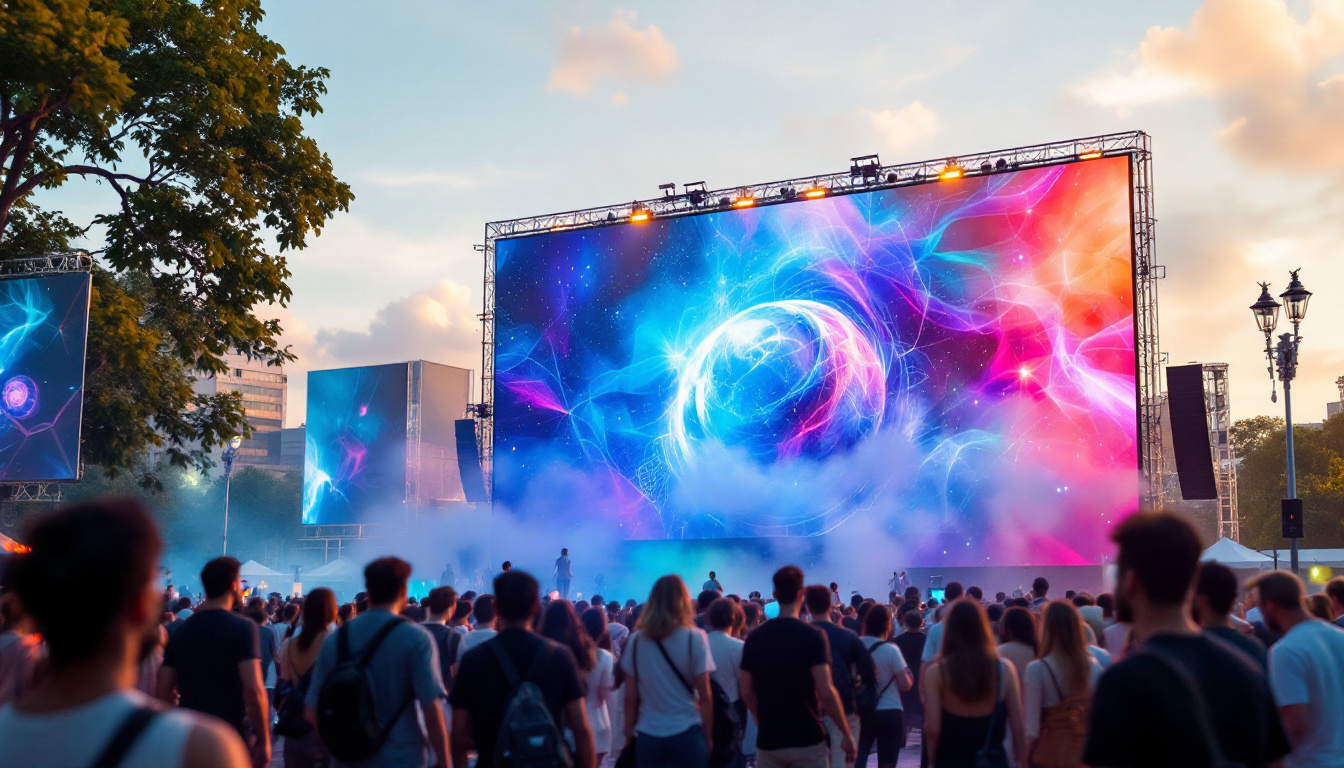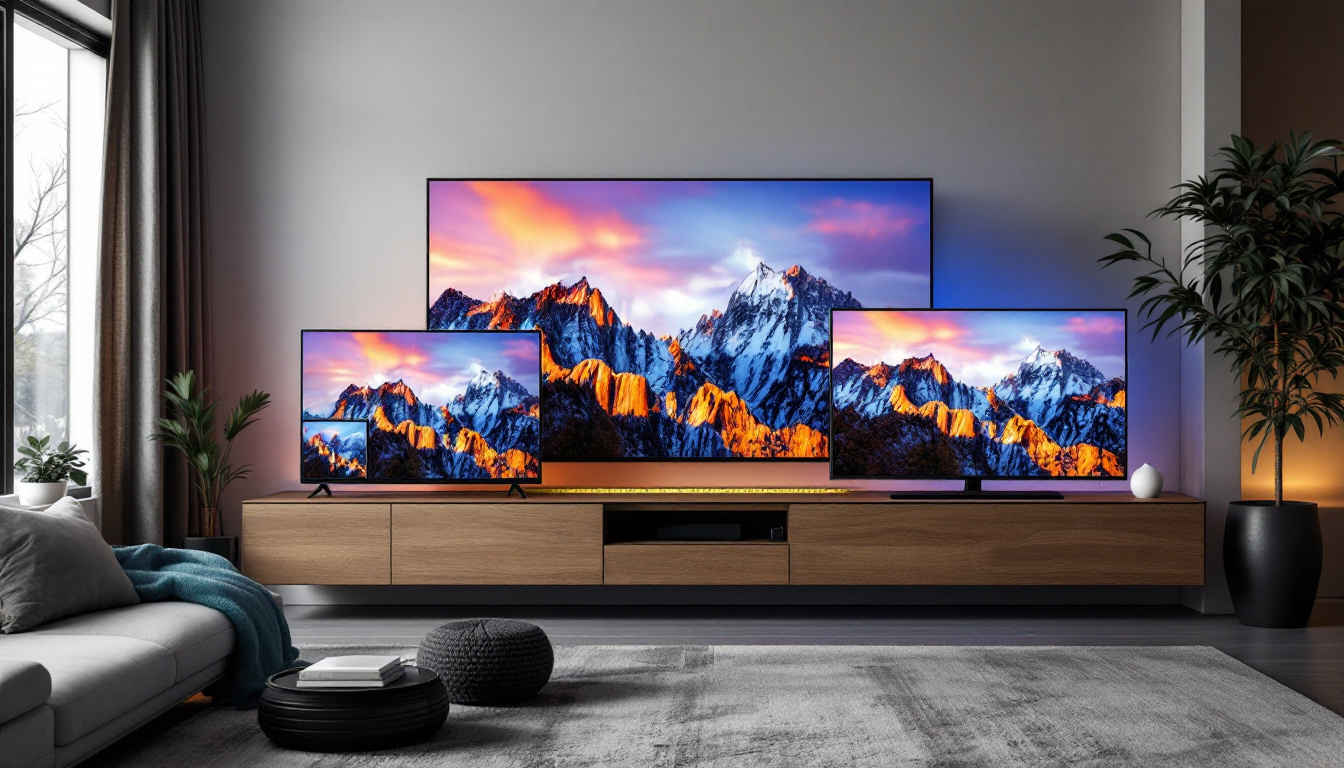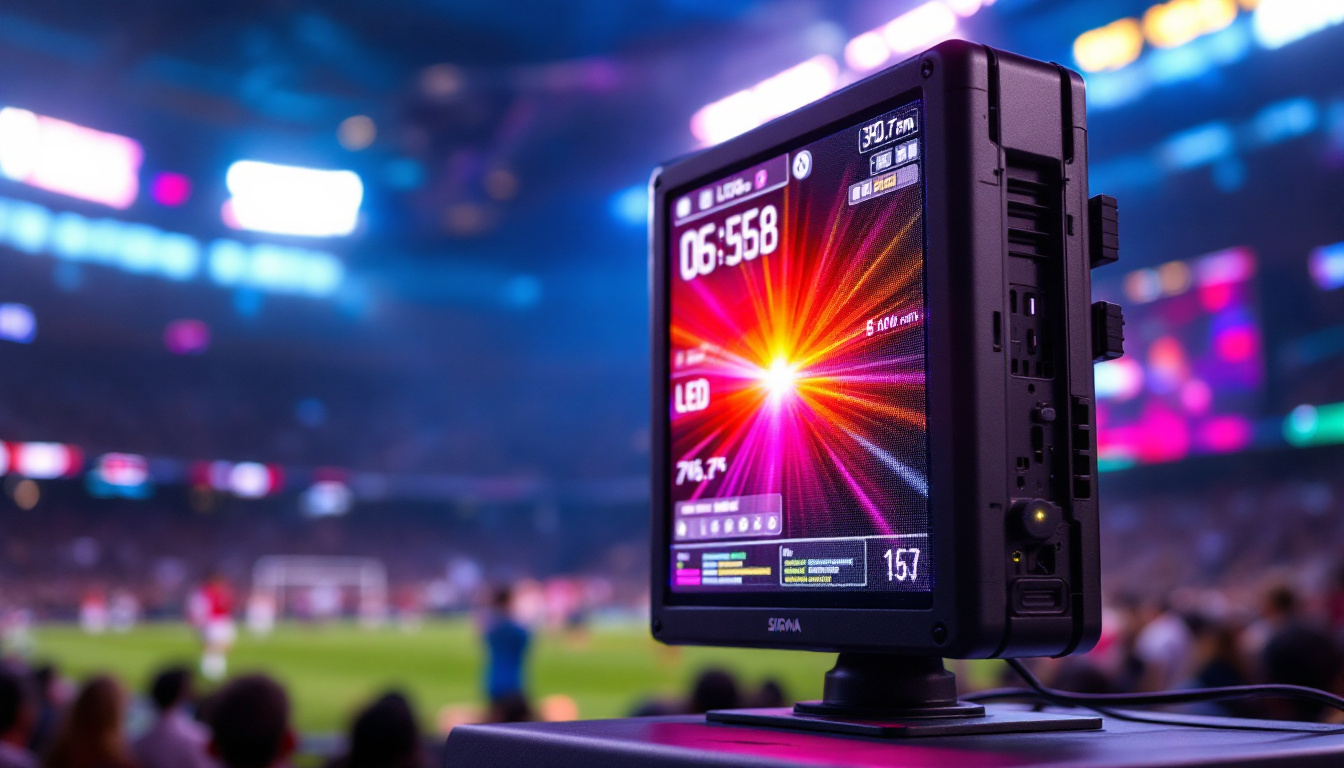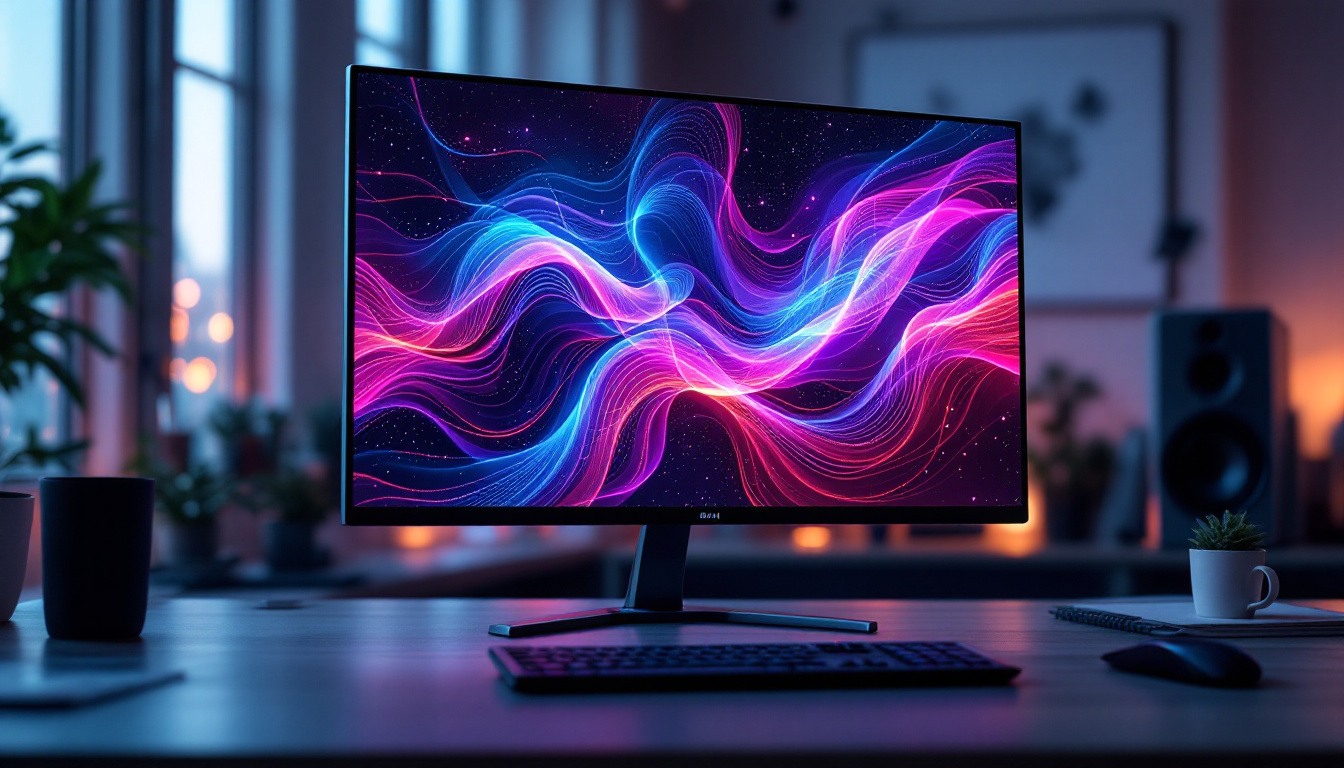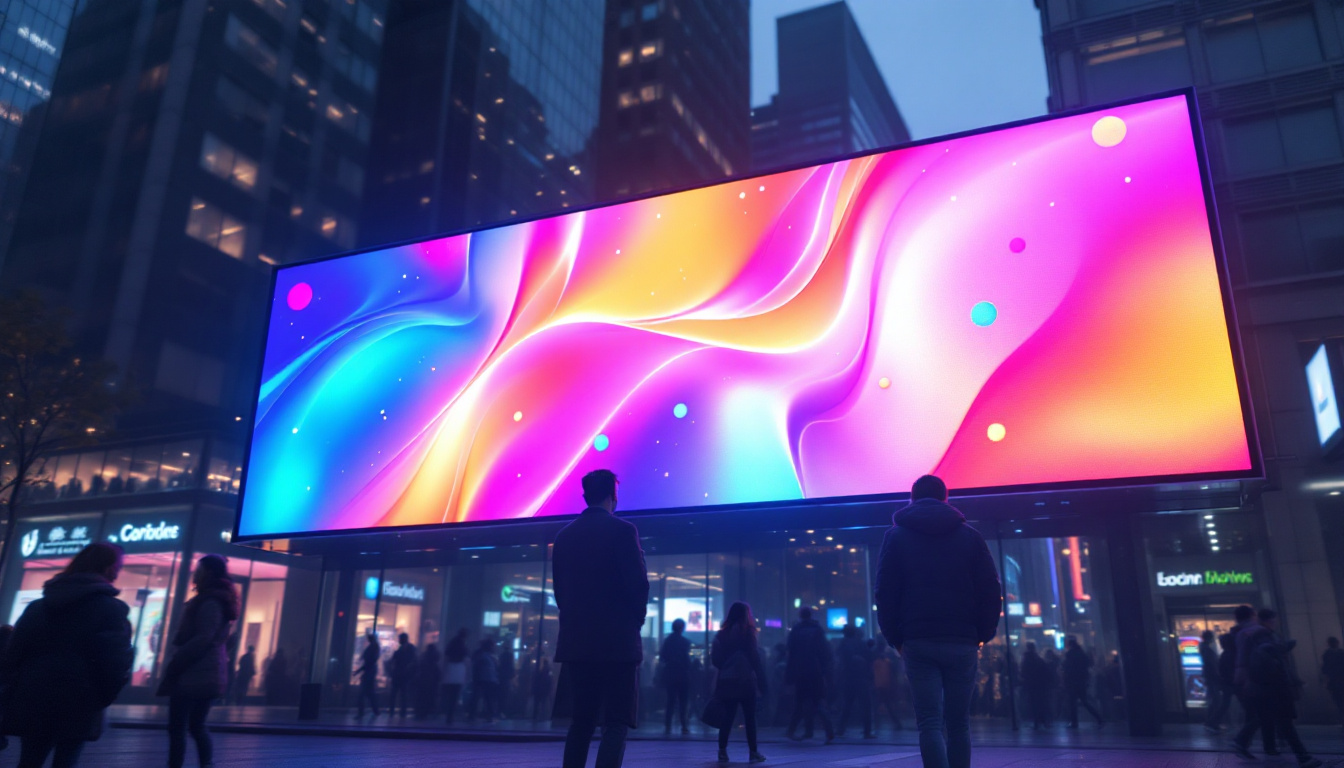In the world of digital technology, the demand for high-quality visual displays has surged dramatically. Among the various types of displays available, professional 4K LED displays have emerged as a leading choice for businesses and creative professionals alike. This article delves into the intricacies of 4K LED displays, exploring their technology, advantages, applications, and considerations for selection.
Understanding 4K Resolution
Before delving into the specifics of LED displays, it is essential to understand what 4K resolution entails. The term “4K” refers to a display resolution of approximately 3840 x 2160 pixels, which is four times the pixel count of Full HD (1920 x 1080 pixels). This high pixel density results in sharper images, finer details, and an overall enhanced viewing experience. The increased resolution allows for a more immersive experience, especially when watching films or playing video games, where every detail contributes to the realism of the scene.
Moreover, 4K resolution is not just about the number of pixels; it also involves advancements in color depth and dynamic range. Many 4K displays support HDR (High Dynamic Range), which enhances the contrast between the darkest and brightest parts of the image, resulting in more vibrant colors and a more lifelike representation of the content being viewed. This combination of high resolution and improved color accuracy makes 4K an attractive option for both entertainment and professional use.
The Importance of Pixel Density
Pixel density plays a crucial role in determining the quality of an image. Higher pixel density means that more pixels are packed into the same screen size, leading to greater clarity and detail. This is particularly important for professional applications, such as graphic design, video editing, and medical imaging, where precision is paramount. In these fields, even the slightest detail can make a significant difference in the final output, whether it’s a beautifully rendered image or a critical medical diagnosis.
In addition to professional applications, the benefits of high pixel density extend to everyday consumers. For instance, when streaming high-definition content or playing video games, users can appreciate the finer details that 4K provides, such as the texture of a character’s clothing or the intricate patterns in a landscape. This level of detail not only enhances the viewing experience but also allows for larger screen sizes without sacrificing image quality, making 4K displays an excellent choice for home theaters and gaming setups.
4K vs. Other Resolutions
While 4K is becoming increasingly popular, it is essential to compare it with other resolutions. Full HD (1080p) and 2K (1440p) displays still have their place, especially for casual viewing. However, for professional environments where detail and color accuracy are critical, 4K displays offer a significant advantage. The difference in visual quality is especially noticeable when working with high-resolution content or when viewing large images. As more content becomes available in 4K, including streaming services and Blu-ray discs, the demand for 4K displays is likely to continue to grow.
Furthermore, the evolution of display technology has led to the emergence of 8K resolution, which boasts an even higher pixel count. While 8K displays are still relatively rare and expensive, they represent the future of visual technology. However, the transition to 8K will require not only advancements in display technology but also a significant increase in the availability of 8K content. For now, 4K remains the sweet spot for consumers and professionals alike, providing an excellent balance of quality and accessibility in the world of high-definition viewing.
What is an LED Display?
LED (Light Emitting Diode) displays utilize semiconductor technology to produce light, making them highly efficient and capable of delivering vibrant colors and deep contrasts. Unlike traditional LCD displays that rely on backlighting, LED displays can produce light directly from the pixels, resulting in improved brightness and color accuracy.
Types of LED Displays
LED displays can be categorized into several types, each with its unique characteristics:
- Direct LED: This type features LEDs placed directly behind the screen, providing uniform brightness and excellent color performance.
- Edge-Lit LED: LEDs are positioned along the edges of the display, allowing for thinner designs but sometimes resulting in less uniform brightness.
- OLED: Organic LEDs offer superior contrast and color accuracy but can be more expensive and less bright than traditional LED displays.
How LED Technology Works
LED technology works by passing an electric current through a semiconductor material, which then emits light. The color of the light emitted depends on the materials used in the semiconductor. By combining red, green, and blue LEDs, a full spectrum of colors can be produced, allowing for vibrant and lifelike images.
Advantages of Professional 4K LED Displays
Investing in a professional 4K LED display comes with numerous benefits that can enhance productivity and improve the overall user experience. Here are some of the key advantages:
Enhanced Color Accuracy
One of the standout features of 4K LED displays is their ability to reproduce colors with remarkable accuracy. This is particularly beneficial for professionals in fields such as photography, graphic design, and video production, where color fidelity is crucial. Many high-end models support wide color gamuts, ensuring that the colors seen on screen closely match the intended output.
Improved Brightness and Contrast
LED displays are known for their high brightness levels, making them suitable for various lighting conditions. Whether in a brightly lit office or a dimly lit studio, these displays can maintain clarity and visibility. Additionally, the contrast ratio of LED displays allows for deeper blacks and brighter whites, enhancing the overall viewing experience.
Energy Efficiency
Another significant advantage of LED technology is its energy efficiency. Compared to traditional display technologies, LED displays consume less power while delivering superior performance. This not only results in lower energy bills but also contributes to a more environmentally friendly operation.
Applications of 4K LED Displays
4K LED displays find applications across various industries, each benefiting from the enhanced visual quality and performance they offer. Below are some of the primary sectors utilizing these displays:
Creative Industries
In fields such as film production, graphic design, and photography, the need for accurate color representation and high resolution is paramount. Creative professionals rely on 4K LED displays to ensure that their work is displayed as intended, allowing for precise editing and color grading.
Corporate Environments
Businesses are increasingly adopting 4K LED displays for presentations, video conferencing, and digital signage. The clarity and detail provided by these displays enhance communication and engagement during meetings and presentations, making them an invaluable tool in the corporate world.
Medical Imaging
In the medical field, accurate imaging is crucial for diagnosis and treatment. 4K LED displays are often used in radiology and surgical environments, where high-resolution images can aid in identifying conditions and planning procedures. The enhanced detail allows medical professionals to make more informed decisions.
Considerations When Choosing a 4K LED Display
Selecting the right 4K LED display requires careful consideration of various factors to ensure that it meets specific needs and requirements. Here are some key aspects to evaluate:
Screen Size and Viewing Distance
The size of the display should be chosen based on the intended viewing distance. Larger screens are ideal for presentations in spacious rooms, while smaller displays may suffice for close-up work. It is essential to strike a balance between screen size and resolution to avoid pixelation and ensure a comfortable viewing experience.
Refresh Rate and Response Time
For applications involving fast-moving visuals, such as gaming or video editing, the refresh rate and response time of the display are critical. A higher refresh rate (measured in Hz) results in smoother motion, while a lower response time reduces blurring. For professional uses, a refresh rate of at least 60Hz is recommended.
Connectivity Options
Modern displays come equipped with various connectivity options, including HDMI, DisplayPort, USB-C, and more. It is essential to ensure that the display supports the necessary connections for your devices. Additionally, features such as daisy chaining and multiple input options can enhance versatility and ease of use.
Future Trends in 4K LED Display Technology
The landscape of display technology is continuously evolving, and several trends are shaping the future of 4K LED displays. Understanding these trends can help users make informed decisions about their investments.
Advancements in HDR Technology
High Dynamic Range (HDR) technology is gaining traction, providing a wider range of colors and increased contrast. Future 4K LED displays are expected to incorporate advanced HDR capabilities, allowing for even more lifelike images. This technology will be particularly beneficial for creative professionals and gamers seeking immersive experiences.
Integration with Smart Technology
As smart technology continues to advance, the integration of 4K LED displays with smart features is becoming more common. This includes built-in streaming capabilities, voice control, and compatibility with smart home systems. Such features enhance usability and convenience, making displays more versatile for various applications.
Increased Focus on Sustainability
With growing awareness of environmental issues, manufacturers are increasingly focusing on sustainability in their products. Future 4K LED displays are likely to incorporate eco-friendly materials, energy-efficient technologies, and recyclable components, aligning with the global push for greener technology.
Conclusion
Professional 4K LED displays represent a significant advancement in visual technology, offering unparalleled resolution, color accuracy, and energy efficiency. Their applications span various industries, from creative fields to corporate environments and medical imaging. When selecting a display, it is crucial to consider factors such as screen size, refresh rate, and connectivity options to ensure it meets specific needs.
As technology continues to evolve, the future of 4K LED displays looks promising, with advancements in HDR, smart integration, and sustainability paving the way for even better user experiences. Investing in a professional 4K LED display is not just a choice; it is a commitment to quality, precision, and innovation in an increasingly visual world.
Explore Cutting-Edge 4K LED Displays with LumenMatrix
Ready to elevate your visual experience with the latest in LED display technology? LumenMatrix is at the forefront of innovation, offering a diverse range of LED display solutions tailored to meet your unique needs. From captivating Indoor and Outdoor LED Wall Displays to dynamic Vehicle and Sports LED Displays, our products are designed to enhance engagement and bring your vision to life. Discover the transformative power of our LED Poster Displays, Floor LED Displays, Custom LED Solutions, and more. Experience the future of visual communication today and check out LumenMatrix LED Display Solutions to make a lasting impression with unparalleled clarity and impact.




